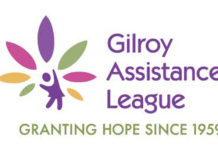GILROY
– The Valley Transportation Authority’s controversial approval
Thursday to borrow $550 million in projected revenue for BART to
San Jose and to forego massive service cuts could have major
effects on South County transportation over the next 30 years.
GILROY – The Valley Transportation Authority’s controversial approval Thursday to borrow $550 million in projected revenue for BART to San Jose and to forego massive service cuts could have major effects on South County transportation over the next 30 years.
To the shock of many and disapproval of its two South County representatives and the County Board of Supervisors, the VTA voted 7-5 Thursday night to endorse issuing bonds and tapping into the November 2000 voter-approved Measure A sales tax. The half-cent sales tax won’t go into effect for three years.
What it means for South County residents is that $425 million in planned improvements to Caltrain during the coming decades will take a back seat to BART to San Jose. Other planned South County upgrades such as a U.S. 101 to Buena Vista interchange near Saint Louise Regional Hospital could see projected funding siphoned as well.
If the $550 million bond is approved by a court this fall, it will also allow the financially-strapped VTA to continue its current level of bus, light rail and transit services, stalling its ultimatum to cut 21 percent of its services come January.
“In my opinion this guarantees that no improvements will be made to South County’s Caltrain routes,” said Mayor Tom Springer, a VTA board member who also serves the board’s ad hoc financial committee headed by County District 1 Supervisor Don Gage. “I’m a proponent of bringing BART to San Jose, but not at the jeopardy of everything else promised to South County citizens when they approved Measure A.”
Approved by more than 70 percent of county voters in 2000, Measure A is a half-cent sales tax beginning in 2006 and lasting for 30 years earmarked to improve public transportation. Using BART expansion as its marquee attraction, the measure was projected to raise $6 billion over 30 years. BART expansion would soak up $2 billion of those funds, while the remaining two-thirds would go to other county public transportation, including $325 million earmarked for a Caltrain double track between Gilroy and San Jose, electrification of the trains and service upgrades. Another $100 million was designated to improve Caltrain equipment and facilities.
Bonding for BART from revenue that was projected during the county’s economic boom and won’t be collected for another three years could mean that when it comes time for Caltrain’s upgrades, the VTA’s Measure A bankroll could be drained, Springer said.
Borrowing against the future revenues will also sink the VTA in debt, which could handcuff many of the 52 South County road projects in its 20-year plan, according to Edwin Chan, Gage’s transportation policy aid who attended Thursday’s meeting. Some of those planned projects include a $30 million interchange at U.S. 101 and Buena Vista Avenue and $100 million project to add carpool lanes from Cochrane Road to Highway 25.
But bond proponents believe the VTA has to borrow the money now to ensure BART’s future.
The VTA members who voted in favor of the unprecedented bond were San Jose Mayor Ron Gonzales; San Jose City Council members Cindy Chavez, David Cortese, Pat Dando and Forrest Williams; Sunnyvale Councilmember Manny Valerio and Jane Kennedy of Campbell. Springer, Gage, County Supervisor Blanca Alvarado, Dena Mossar of Palo Alto and John McLemore of Santa Clara opposed the bond.
“If we don’t keep the BART project going now we run a big risk of losing critical federal funding,” said David Vossbrink, spokesperson for Gonzales, one of BART’s most passionate cheerleaders. “We understand the concerns of Gilroy residents worried about losing Caltrain money, but everyone needs to understand this is a 30-year measure with a long timetable. Borrowing a portion of the money now will not doom future projects.”
Due in large part to declining sales tax revenue, VTA officials have estimated the likelihood of a reoccurring $160 million annual deficit during the coming years, and say they need an additional $100 million annually to continue current service.
The total cost of extending BART from Fremont to San Jose is projected to be $4 billion. The majority of the $2 million coming from Measure A revenues will go toward engineering. Vossbrink said federal funds are expected to make up the remaining cost of BART.
As head of the VTA financial committee, Gage had originally proposed borrowing $80 million from future Measure A funds to keep buses and trains running during the agency’s financial crisis, sparing planned countywide cuts that would eliminate at least one Gilroy bus route and reduce the service of four others. But on Thursday when hundreds of millions in additional dollars for BART got added on the bond, Gage changed his mind.
“It’s like being broke and applying for a $550 million credit card,” Chan said. “Mr. Gage isn’t anti-BART, but this bond is putting all our resources into one project, and that’s not what the citizens voted for in 2000.”
Nearly 85 percent of the VTA’s operating budget is comprised of sales tax revenues, which have fluctuated dramatically with the economy. With the current economic downturn, agency revenues have dropped 33 percent in two years.
In the last two years, the VTA has reduced bus and light-rail service 14 percent, cut more than 550 positions, raised fares by 15 percent, deferred $115 million in capital projects and made other moves designed to improve efficiency to help address the budget crunch.
Voters can expect a sales tax proposal on the ballot in November 2004 to rescue the VTA, but measures earmarked for service are traditionally much harder to sell than those touting new projects.
“As anybody who has ever borrowed money knows, the debt just keeps growing,” Springer said. “That’s why this bond is so dangerous.”













